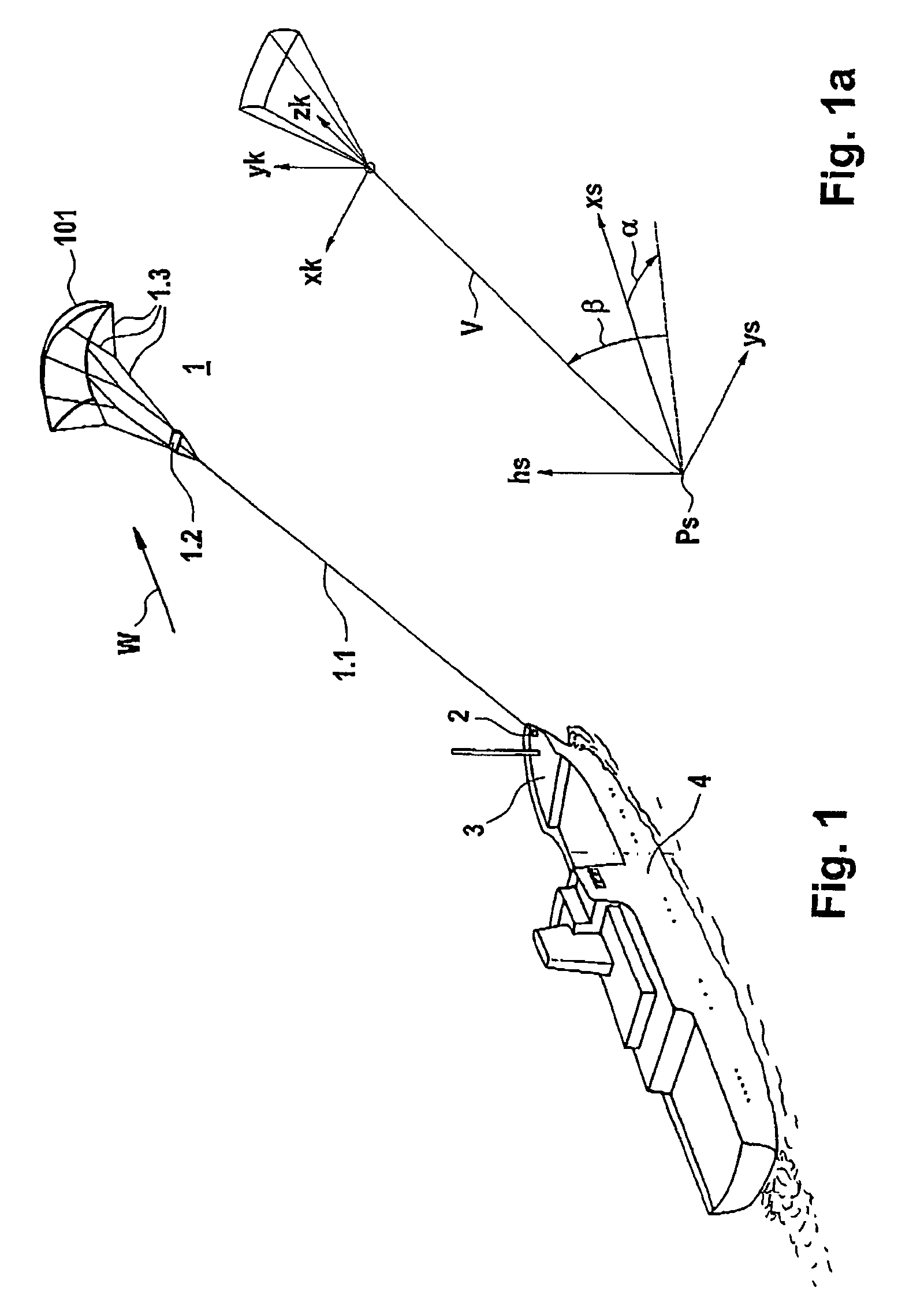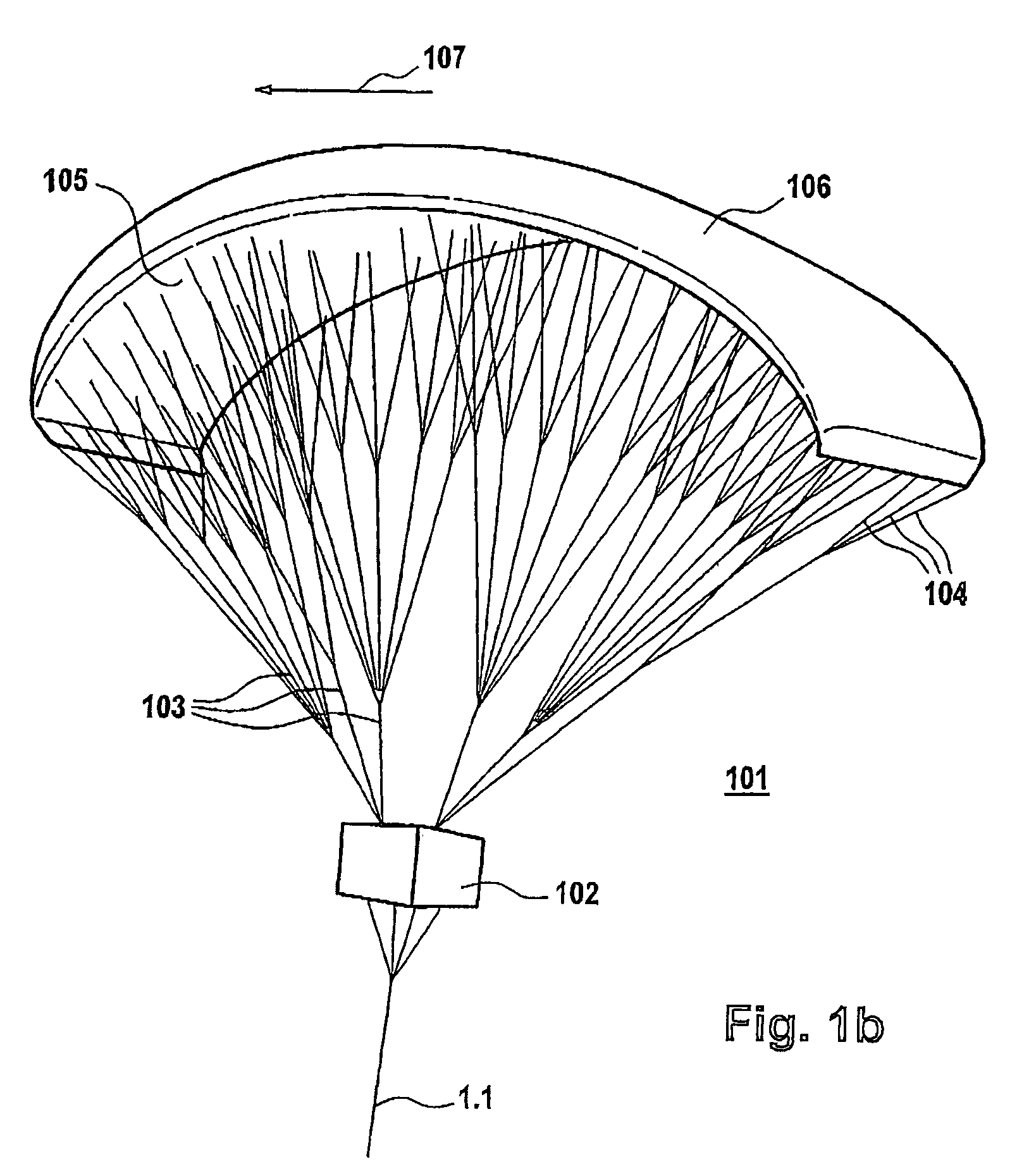Watercraft comprising a free-flying kite-type wind-attacked element as a wind-powered drive unit
a technology of wind-powered drive unit and free-flying kite, which is applied in the field of watercraft, can solve the problems of element on which wind acts are cut off, or it is not possible to carry out the direction chang
- Summary
- Abstract
- Description
- Claims
- Application Information
AI Technical Summary
Benefits of technology
Problems solved by technology
Method used
Image
Examples
Embodiment Construction
[0038]FIG. 1 shows an oblique plan view of a vessel which is being towed by the kite system. In this case, an element 1 on which wind acts is connected to a vessel 4 via a hawser 1.1 with an apparatus 2 on which force acts and which is provided in the bow area of the vessel 4. The hawser 1.1 is passed to a central gondola 1.2, from which a number of holding lines 1.3 originate, which are passed to the element 1 on which wind acts and is in the form of a paraglider with a kite profile, giving it the necessary shape. The details relating to this will be explained further below in the description. The apparent wind direction in the area of the element 1 on which wind acts is annotated W. The corresponding wind vector is indicated by its magnitude and direction. If required, its rate of change is also indicated by a variable B, which denotes the gusting, forms the mean time discrepancy between the wind speed and its mean value and can be represented as a scalar, which effectively forms ...
PUM
 Login to View More
Login to View More Abstract
Description
Claims
Application Information
 Login to View More
Login to View More - R&D
- Intellectual Property
- Life Sciences
- Materials
- Tech Scout
- Unparalleled Data Quality
- Higher Quality Content
- 60% Fewer Hallucinations
Browse by: Latest US Patents, China's latest patents, Technical Efficacy Thesaurus, Application Domain, Technology Topic, Popular Technical Reports.
© 2025 PatSnap. All rights reserved.Legal|Privacy policy|Modern Slavery Act Transparency Statement|Sitemap|About US| Contact US: help@patsnap.com



